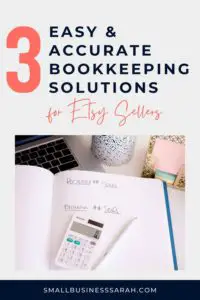As a small business owner, saving money wherever you can is a major key to success. Learn how to get a home office tax deduction, so you can pay less come tax time. Let me walk you through how to get this often overlooked tax deduction.
In order to claim a home office tax deduction, (also called the business use of your home tax deduction), there are two qualifications you must meet. You must use an area of your home regularly and exclusively for conducting business.
Exclusively
The size of the space where you conduct your business, and that could qualify for the home office tax deduction, is irrelevant. The area where you conduct your business could range from a desk in your living room, to an actual office room in your home, or even an entire floor of your home.
The important fact is that to qualify for a home office tax deduction, the IRS stipulates that you cannot use the space for both business and personal purposes, it must be used only for business purposes. If you have a home office, you can only use it for the business to qualify for the tax deduction. I personally have half of my basement that I use exclusively for my Amateur Naturalist Etsy shop. This portion of my basement houses all of my inventory and packaging supplies and it’s where I process all of my orders. I don’t use that portion of my basement for anything else but running my Etsy shop, so it meets the exclusivity test.
When writing my books, I do most of the work at the kitchen table or on the family room couch. Because the kitchen table and couch are not exclusively used for the business, those areas of my house don’t qualify for a tax deduction. Too bad!
Be very careful that the area you use for working meets the exclusivity test. For instance, if you have a desk in your family room where you work, you can only use that desk for business purposes in order to meet the exclusivity test. And as we mentioned previously, if you have a home office, to meet the exclusivity test you can only use that home office for your business work, not for personal purposes.
Regularly
If you have an area of your home that you use exclusively for your business, you must also use that area regularly in order to qualify for the business use of your home tax deduction. The area cannot be used only occasionally for the business. The IRS does not specify how often you must use the business area of your home to meet their “regularly” requirement, so use your best judgment!
Principal Place of Business
The IRS also stipulates that your home must be your principal place of business in order to take the home office tax deduction. As a home-based small business owner, this is almost always the case.
Calculating the Home Office Tax Deduction
If you use part of your home regularly and exclusively for your small business and qualify for a home office tax deduction, there are two methods to choose from when calculating the amount of your tax deduction. The Actual Expenses method is the most difficult and time-consuming. The Simplified Method is very simple and easy to calculate.
To calculate your home office tax deduction for either method, begin by calculating the square footage of the business use part of your home. In our example, our business portion is a 10×10 area or 100 square feet. Next, determine the square footage of your entire house, for this example, we will assume you have a 1,000 square foot home. Lastly, calculate the percentage used for business purposes, so for our example, 100 sf/1,000 sf= 10% of the home is used for business purposes.
Now let’s take a closer look at both methods.

Actual Expenses Method
With the Actual Expenses method, a portion of the expenses involved in owning and maintaining your home can be counted as a business tax deduction. In our example, 10% of real estate taxes, insurance, mortgage interest, utilities, depreciation, etc. can be counted as a home office tax deduction. These are called Indirect Expenses.
There can also be direct expenses. If you have to paint or repair the business portion of your house, then the entire cost to repair or maintain that area is a business expense. However, if you are repairing or maintaining other parts of your home, those expenses are unrelated, and not even a portion can be taken as a business expense. For instance, if you paint or repair your kitchen, you can’t claim even a portion of that as a business expense because those costs are unrelated to the business portion of your home. However, if you make a repair in the 100 square foot section of your home that qualifies as a home office, then that entire repair cost qualifies as a deduction on your taxes.
If you choose the Actual Expenses method, you’ll need to complete Form 8829. This may seem confusing, but keep in mind that you should be using a tax professional or tax software to complete your tax return. The tax program will walk you through these steps and complete this form for you. You just need to know to check that box that yes, you do qualify for a home office/business use of your home deduction.
There are limits on how much of a home office deduction you can take based on your business profits for the year. These limits are calculated on Form 8829. The tax program you use will also adjust your Schedule A itemized deductions for the portion of certain items (such as real estate taxes) you take as a business deduction. The IRS is not going to let you count the same expenses twice.
The Simplified Method
Yes, there really is a simplified method, and it’s actually simple!
Once again begin by calculating the square footage of the business use of your home. Multiply the business square footage by $5 to determine your tax deduction. In our example of a 100 square foot home office, that’s a $500 tax deduction. The maximum deduction for the simplified method is 300 square feet or $1,500. Isn’t that easy? The simplified method calculation is right on Schedule C.
There is a gross income limitation on the easy method. If you don’t have enough profit to cover the business use of your home tax deduction, you’re not going to be able to take it in that year. So if your profit (revenue-expenses = profit) was only $100, you can only take up to $100 of the home office tax deduction. You can’t take the home office tax deduction if it will cause you to have a business loss in that year.
If you are enthralled by this riveting topic and want to know more, the IRS explains the guidelines to the business use of your home in Publication 587.




